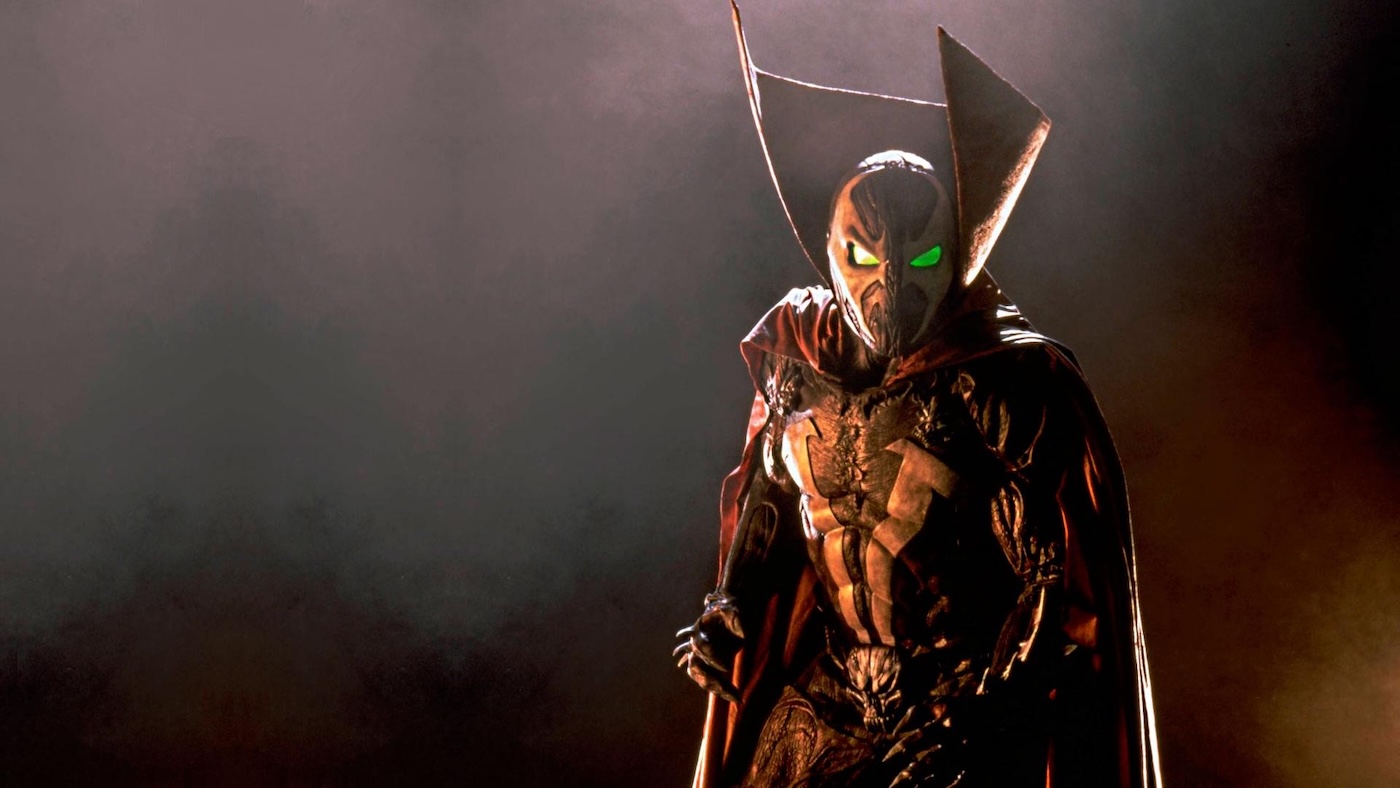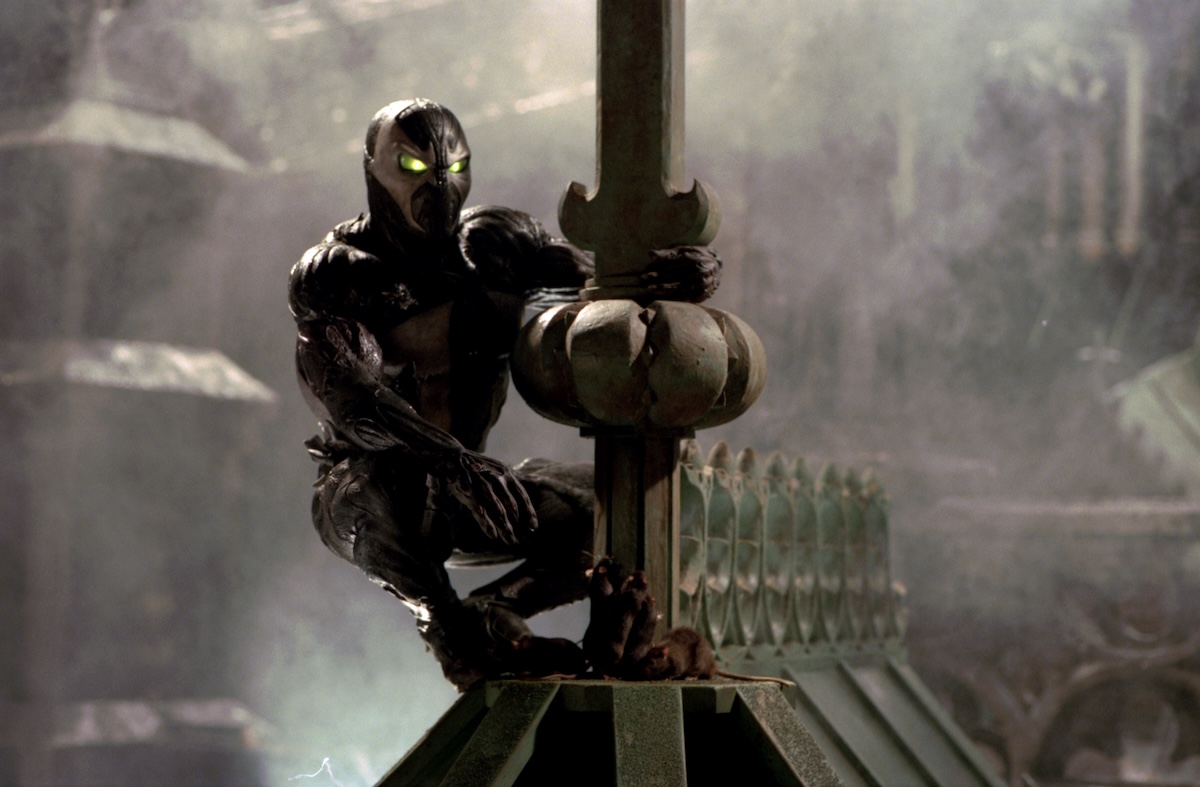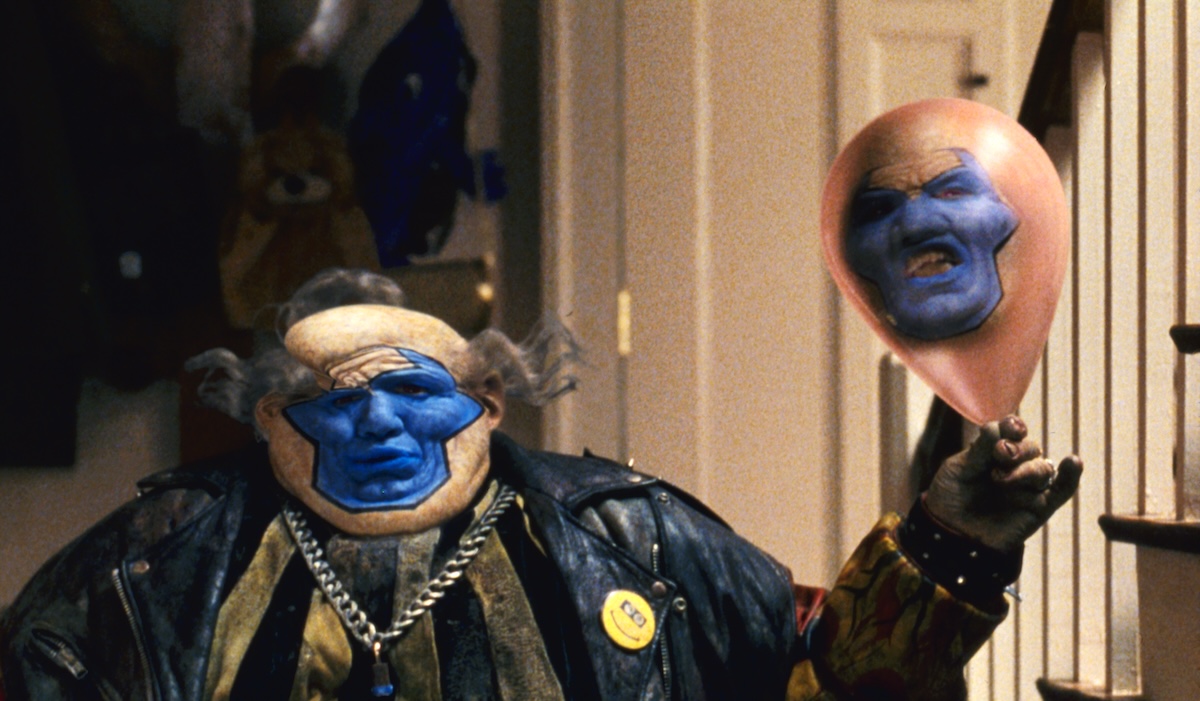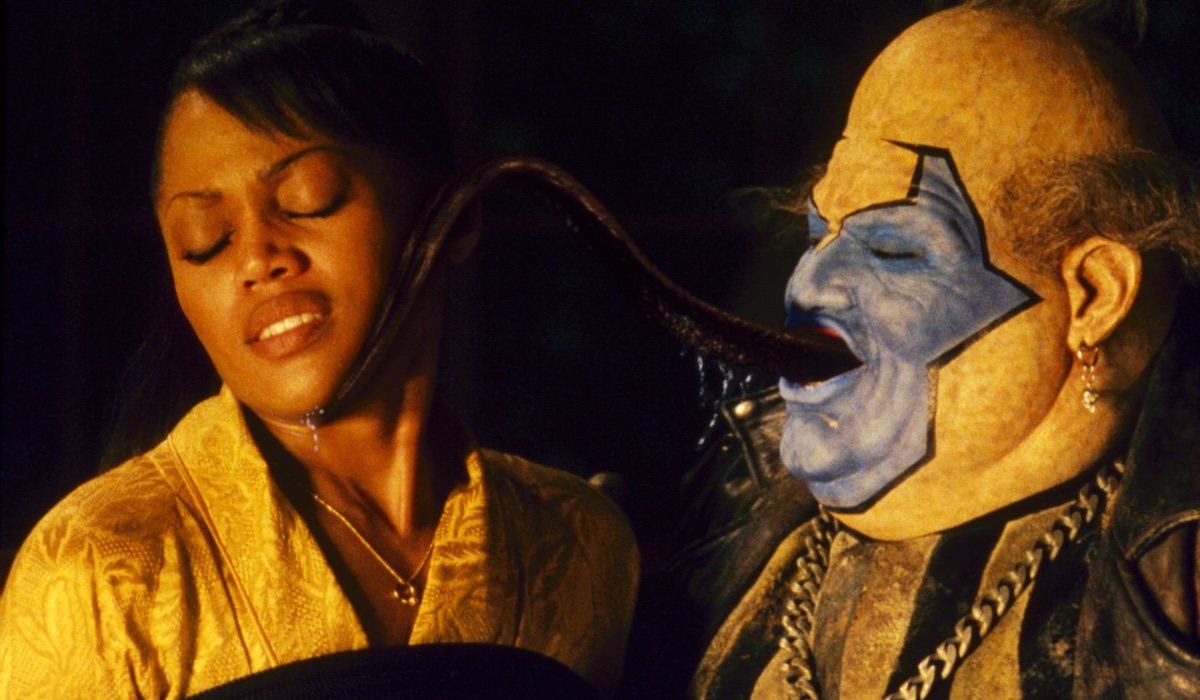SPAWN (1997)
After being murdered by colleagues, a covert CIA operative makes a pact with the devil to be resurrected to see his beloved wife...

After being murdered by colleagues, a covert CIA operative makes a pact with the devil to be resurrected to see his beloved wife...


The 1997 film adaptation of Todd McFarlane’s Spawn could have been a cultural milestone. Focusing as it did on Al Simmons, a Black superhero whose debut on the big screen predates Blade (1998), the film attempted to deliver a unique, uncompromising comic-book vision filtered through an action-horror prism. The superhero genre was in desperate need of redirection by the late-1990s. Tim Burton’s Batman (1989) had established a successful neo-gothic counterpoint to the colourful optimism of Superman (1978), but that darkness was utterly extinguished by the neon-lit camp of Joel Schumacher’s catastrophic Batman & Robin (1997). Released the same year as that franchise-killer, Spawn was perfectly positioned to pull the superhero film down a necessary, darker path. Unfortunately, this potential was tragically squandered, primarily because the film is, quite simply, a terrible cinematic experience.
The foundational narrative of Spawn, however, remains compelling on paper. It centres on Al Simmons (Michael Jai White), a covert CIA operative who’s betrayed and murdered by his corrupt boss, Jason Wynn (Martin Sheen). Upon his death, Simmons makes a desperate Faustian pact with the demonic entity Malebolgia: he agrees to lead Hell’s army against Heaven in the coming Armageddon in exchange for a temporary return to Earth. He’s duly resurrected as a powerful, demonic anti-hero known as ‘Spawn’, only to find that five years have passed.
Since his demise, his fiancée, Wanda (Theresa Randle), is now married to his best friend, Terry (D.B Sweeney), and they’re both raising his young daughter, Cyan. Caught between his duty to Hell and his desire to reconnect with his loved ones and avenge his death, Spawn is effectively a hodgepodge of popular dark fantasy tropes, borrowing elements from films like RoboCop (1987), The Crow (1994), and various diabolical comic characters like Ghost Rider and Hellboy. The idea of a man returning from the grave driven by tragic vengeance is a reliable template for dark fantasies, but Spawn fails to give this compelling blueprint a solid structure.

The casting of Michael Jai White as Al Simmons was inspired. White, a formidable martial artist and actor with genuine screen presence. The significance of an African American lead headlining a major superhero tentpole in ’97 can’t be overstated. It was a pioneering moment —although Spawn only beat the Shaquille O’Neal-starring Steel to the multiplexes by a few weeks — but the resulting product diminished its cultural value. Instead of leveraging White’s physical talents or giving him the emotional heft needed to convey Simmons’s tragedy, the screenplay relegated him to reacting to CGI nonsense. The film never grants the character the dignity or the emotional arc that was fundamental to the comic-book, reducing him to a brooding pawn caught between Heaven and Hell.
The biggest obstacle the film faced was its direction, as Spawn was helmed by Mark A.Z. Dippé, a highly talented VFX supervisor for Industrial Light & Magic (ILM) making his feature-film directorial debut. Dippé’s undoubted technical gifts, honed on groundbreaking films like The Abyss (1989) and Terminator 2: Judgment Day (1991), meant he pushed the limits of the project’s $45M budget. Spawn was produced with less than half the money allocated to The Lost World: Jurassic Park the same year. But Dippé stretched the cash too far in pursuit of an epic, infernal vision, resulting in sequences that often dissolve into visual clutter and are populated by laughably poor CGI.
While the late 1990s were a nascent period for computer-generated imagery, Spawn’s ambitions were breathtakingly out of sync with its financial and technical realities. Dippé attempts to realise a vision of Hell populated by thousands of ‘Hellspawn’ on floating rocky platforms, constantly ablaze with fire, and presided over by the gigantic, low-res dog-like puppet known as Malebolgia incapable of lip-syncing to Frank Welker’s vocals. This failure highlights a crucial lesson in filmmaking: the need for a director to choose their battles. When the technology or money is lacking, an experienced filmmaker finds inventive ways around limitations, often implying more horror and scale through atmosphere and suggestion rather than rendering every detail explicitly. Instead, Spawn determinedly went “full-CGI,” delivering some of the most embarrassing visual sequences ever added to a major studio film, looking less like a feature-film and more like a poorly rendered cut-scene from an early-1990s PC game.
To its credit, Spawn should be recognised for a few genuinely ahead-of-its-time elements. Notably, Spawn’s flowing, voluminous red cape was rendered entirely in CGI, pioneering a technique that’s now commonplace, even if the result often looks floaty and unconvincing here. Furthermore, the film used a now-popular visual idea that superhero masks aren’t made of fabric but are an organic part of a character’s supernatural or mechanical costume — an idea now widely adopted by many superhero franchises.

Even allowing for its age and technological constraints, Spawn remains a depressingly tedious film that squanders its core concept. Dippé appeared far more enamoured with the VFX opportunities than with any fundamental desire to tell a compelling story with well-rounded, believable characters. It doesn’t help that the screenplay, by Alan B. McElroy (Halloween 4: The Return of Michael Myers), is anchored by atrocious dialogue and poorly defined character motivations.
The assembled cast is impressive on paper, but every actor struggles to overcome the script’s inadequacies. As the villainous Jason Wynn, Martin Sheen commits entirely to scenery-chewing, delivering a performance that clearly marks a low point in his career just before his TV lifeline came in the form of The West Wing (1999–2006). Similarly, Nicol Williamson, whom playwright John Osborne once called “the greatest living actor since Marlon Brando,” took the mentor role of the former Hellspawn Cogliostro. He was likely expecting to become the Alec Guinness in Star Wars (1977) for this would-be franchise, making him yet another revered British thespian slumming it in disposable Hollywood genre feature.
The peripheral characters suffer even more. The relationship between Wanda and Terry, intended to provide the necessary emotional anchor for Simmons’s tragedy, never achieves the required weight. Their tedious dialogue and flat chemistry fail to communicate the complex emotional stakes of Simmons’s loss. Compounding this structural failure was the unfortunate decision to change the character of Terry Fitzgerald from Black in the comics to white in the film, reportedly to avoid the perception that the film was exclusively aimed at Black audiences. This decision stripped the narrative of nuance and highlighted the studio’s nervousness regarding Black-led genre films — a stark reminder of how long the industry would wait for the success of Black Panther (2018) two decades later.

The sole actor who manages to emerge from this cinematic wreckage with any semblance of respect is John Leguizamo as The Violator, a demonic entity often appearing in the form of the repulsive, obese ‘Clown.’ Leguizamo commits entirely to the character’s insanity, sinking his teeth into every witless comment and dumb joke, ensuring that The Violator, at least, registers as a character worth watching.
However, even The Violator suffers from poor definition within the plot. He’s simultaneously Spawn’s perverse accomplice —sent to mentor him in the use of his new demonic powers—and the devious mastermind behind Wynn’s nefarious scheming. His inconsistent positioning and ill-defined role suggest that the writer only found a comfortable grasp on this type of twisted, sub-Joker villain, filling the gaps with chaotic energy. While Leguizamo is lumbered with awful dialogue and unfunny quips, the sheer force of his manic performance is appreciated. He provides the only genuine spark of ghoulish life in a film otherwise stifled by technical inadequacy and narrative confusion.
In summary, Spawn is a monumental disappointment. It was also beaten to the punch by the comparatively masterful HBO animated series of Spawn, which launched just months prior and offered a superior, Emmy-winning adaptation that faithfully captured the tone of Todd McFarlane’s work.
This movie remains a potent cautionary tale of what happens when ambitious visual spectacle outweighs coherent storytelling, competent direction, and the proper use of a talented cast. It’s a film that failed to capitalise on its potential to revolutionise the genre, instead cementing itself as a total disaster just before the superhero boom of the 2000s began with X-Men (2000) and Spider-Man (2002).
USA | 1997 | 98 MINUTES (DIRECTOR’S CUT) • 96 MINUTES (THEATRICAL) | 1.85:1 | COLOUR | ENGLISH

For this review, I watched the Director’s Cut, which I hadn’t seen before. It’s two-minutes longer than Spawn’s Theatrical version released in 1997. The additions are fairly minor, as nothing stood out to me as being different until I researched the differences. This certainly isn’t a case where the extra footage improves a deeply flawed movie, Kingdom of Heaven-style. Most of the changes are additional shots of violence that were trimmed to guarantee a PG-13 rating by the MPAA, like shots of Simmons burning to death and, oddly, a longer shot of The Violator’s soiled underpants. They missed a trick not marketing this as the Skidmark Cut.
However, Arrow Video’s restored 4K Ultra HD presentation with Dolby Vision/HDR10 certainly makes Spawn stand out from how I first saw it, on standard-definition digital TV and DVD. The extra detail and contrast with the cinematography, which is often dark and murky, certainly helps make Spawn look the best it’s ever looked. Some of the objectively bad VFX are much clearer, as the 2160p image is naturally better at delivering a clarity that hasn’t been observed on home video until now. I guess now you can say the full-CGI sequences are still terrible, but now you can see every pixel of the nightmare.

director: Mark A.Z. Dippé.
writer: Alan B. McElroy (based on the comic-books by Todd McFarlane).
starring: Michael Jai White, John Leguizamo, Martin Sheen, Theresa Randle, Nicol Williamson & D.B Sweeney.
